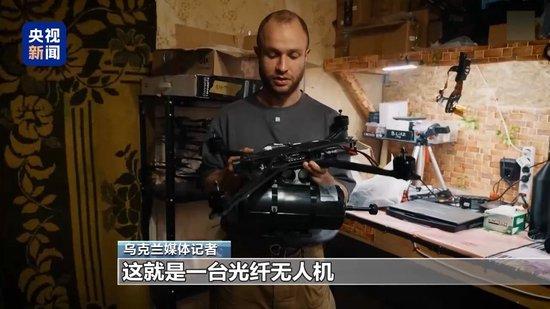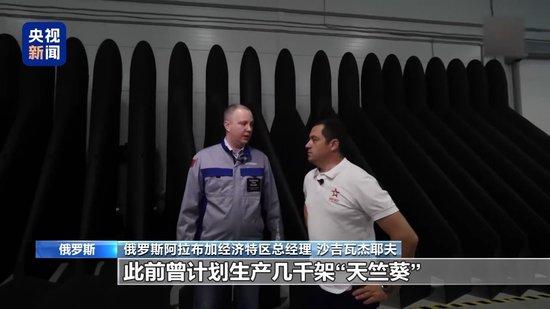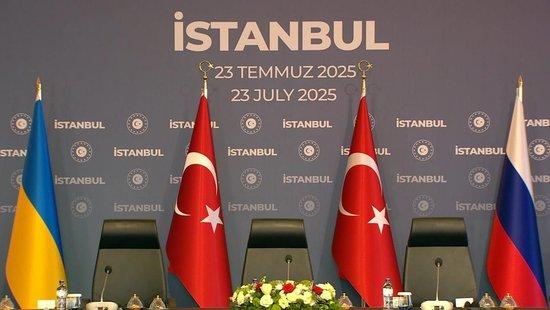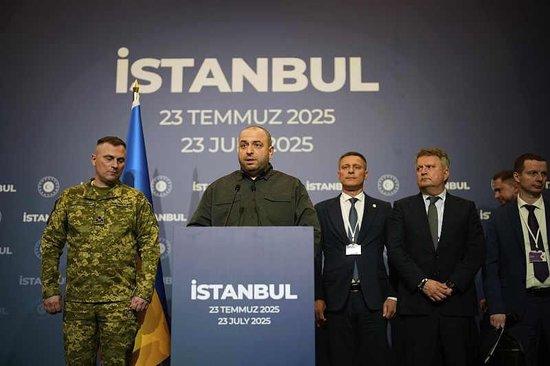



On the 23rd local time, Russia and Ukraine held their third round of direct negotiations in Istanbul, Turkey.
The negotiations concluded less than an hour later.
Russia and Ukraine only reached a consensus on the exchange of prisoners of war. Russia stated that its ceasefire position was far from being agreed upon, but agreed to continue discussions; Ukraine released a ceasefire signal, proposing to hold a leadership meeting.
Currently, the drone combat between Russia and Ukraine is at its peak, and in the future, drone attacks will become the primary mode of attack in the conflict between Russia and Ukraine.
This round of negotiations was chaired by Turkish Foreign Minister Fethiye Fidan. In his opening speech, Fidan stated that the purpose of this round of negotiations was to end the Russia-Ukraine conflict as soon as possible. Turkey is willing to fulfill its responsibilities according to the agreement reached with relevant parties and actively promote the quick resolution of the conflict. After the opening speech, the Russian delegation’s head, Assistant to the President of Russia, Medinsky, and the Ukrainian delegation’s head, Secretary of the National Security and Defense Council, Umerov, led a closed-door negotiation session.
A Consensus on New Round of Prisoner Exchange
Russia and Ukraine agreed to conduct another exchange of more than 1200 people in the near future.
Medinsky mentioned that Russia and Ukraine are currently exchanging prisoners of war each other, which is the last batch of exchanges achieved during the second round of negotiations. Russia has returned over 7000 bodies to Ukraine, and if Ukraine has sufficient refrigeration equipment, Russia will return an additional 3000 Ukrainian military bodies.
Russia reiterated its suggestion for a 24-48-hour ceasefire line to allow both sides to collect bodies and withdraw wounded soldiers.
Both Russia and Ukraine agreed to conduct another exchange of more than 1200 people in the near future.
Umerov stated that in terms of prisoner exchanges, Russia agreed to return prisoners who have been held for more than three years, especially those with serious injuries and young people, and Ukraine and Russia will conduct a humanitarian exchange involving more than 1200 individuals.
Ukraine proposed holding a summit meeting, while Russia stated that the timing was not ripe for such a meeting.
“领导人会晤是为了给协议画上句号,而不是像现在讨论细节”。
乌提议在8月底前举行 邀请特朗普参加
乌梅罗夫在谈判后表示,
乌克兰提议在8月底前举行一场领导人会议
将邀请土耳其总统埃尔多安和美国总统特朗普参加
俄称双方立场相距甚远 乌释放停火信号
俄称双方立场相距甚远 但同意继续讨论
梅金斯基表示,双方用了很长时间讨论上次交换的备忘录,但是双方立场相距甚远,不过双方同意继续在代表团和工作组层面继续讨论。
乌克兰方面还释放出愿意停火的信号
,特别是提出停止对关键和民用基础设施的打击。他提到,乌克兰支持美国总统特朗普的倡议,并且俄乌双方已多次举行会晤,在人道主义方面也取得了一定进展,如战俘交换等事宜。不过在停火方面,至今仍未取得实质性突破。
乌梅罗夫表示,乌克兰正按优先事项逐步推进相关工作。其中,民众的利益、实现停火以及促成领导人会面始终是乌克兰方面的优先事项。
俄罗斯希望与乌克兰举行第四轮谈判
此外,俄方建议,成立政治、人文和军事问题三个工作组,乌方承诺考虑这一建议。梅金斯基表示,俄罗斯希望与乌克兰举行第四轮谈判。
俄乌无人机攻防战白热化
过去三年间,无人机在俄乌战场的使用越来越广泛,而最近一段时间,俄乌双方的无人机攻防战也愈发白热化。
The Russian military deployed the “Tianjuhua” drones to strike multiple Ukrainian industrial plants. On the 21st, they continued their operations, targeting several factories in Kyiv and other locations for the production of electronic devices, navigation systems, missiles, and aerial bombs for the Ukrainian army. According to the Kyiv Independent Newspaper, in June alone, the Russian military fired over 5,300 “Tianjuhua” series drones at Ukraine.
The “largest attack drone factory” in Russia has been exposed.
On the 20th, Red Star TV revealed a large drone factory located in the Abatau district of the Republic of Tatarstan. The facility is described by the Russian side as the largest drone factory in the world, primarily producing the “Tianjuhua-2” suicide drones.
Could you please share how many such drones are currently being produced?
Sajivjaev, General Manager of the Abatau Economic Zone in Russia:
Previously, there were plans to produce thousands of “Tianjuhua” drones, but now we have produced nine times the amount originally planned.
Ukraine Begins Production of Anti-Drone Rifle Ammunition
In response to Russian drone attacks, Ukraine has begun the production of anti-drone rifle ammunition. The “Brave 1” defense innovation project recently released a video showing some soldiers successfully using a new bullet to shoot down small drones.
It is understood that this bullet is designed for NATO standard rifles, using 5.56mm standard ammunition, which is widely used in the Ukrainian military.
Hard to See, Interference Resistant, Fiber Optic Drones Used in Operations
Notably, a new type of weapon—fiber optic drones—has also been utilized in actual combat between Russia and Ukraine.
This is a fiber optic drone, with a typical carbon fiber first-person view drone on top. This drone is quite large because it not only needs to carry batteries and ammunition but also carries a very long, thin, and lightweight optical fiber cable that stretches 10 kilometers.
It is understood that due to the signal transmission being carried out within the fiber optics, it does not radiate signals externally, making optical fiber drones difficult to detect and highly resistant to interference. Currently, both Russia and Ukraine are intensifying their production of optical fiber drones.
Intensifying Production: Drones as a Future Dominant Mode of Combat
The Russian side claims that the production of the sunflower long-range attack drone will increase by ninefold; Ukraine once planned to achieve an annual output of 8 million drones by 2026. Therefore, both sides’ drone research and development, including production capacity, are enhancing simultaneously. In the future, drone combat will become a dominant mode of attack in the Russo-Ukrainian conflict.